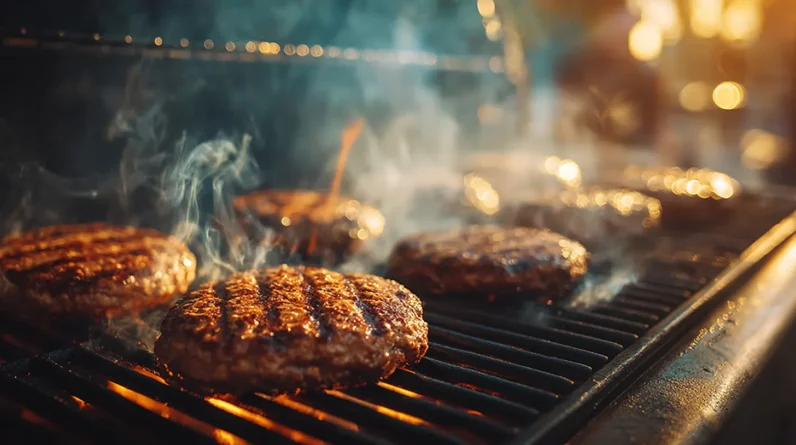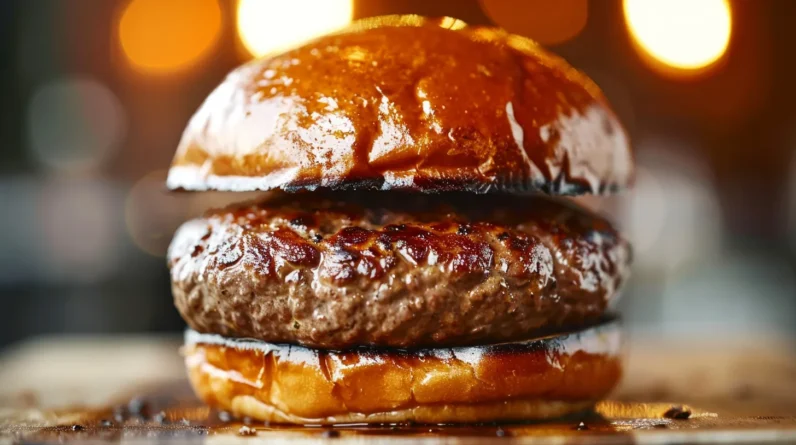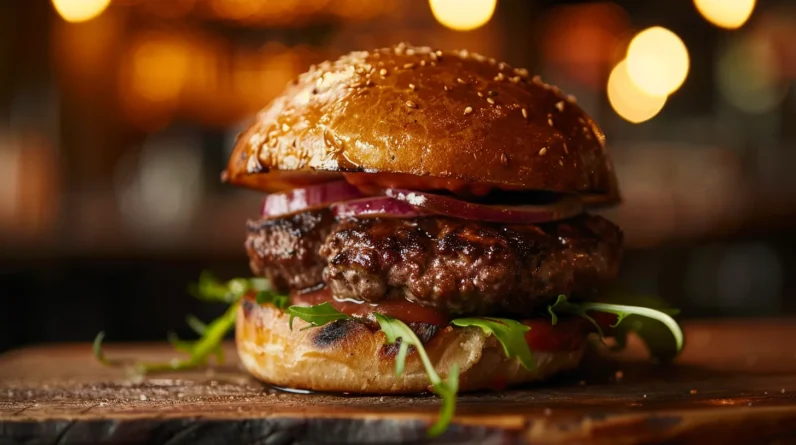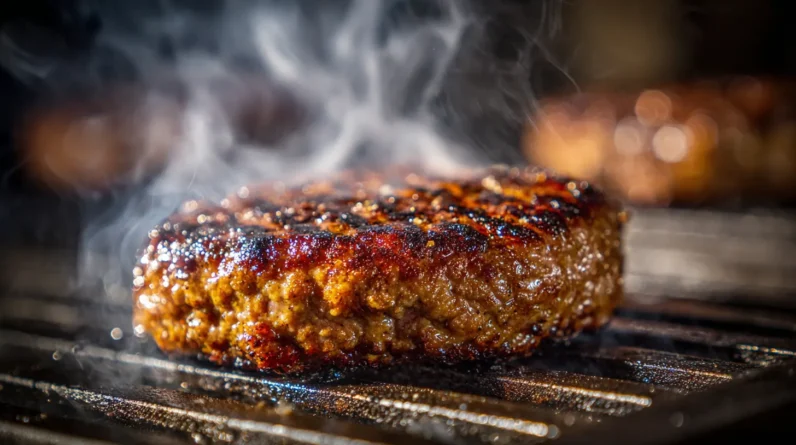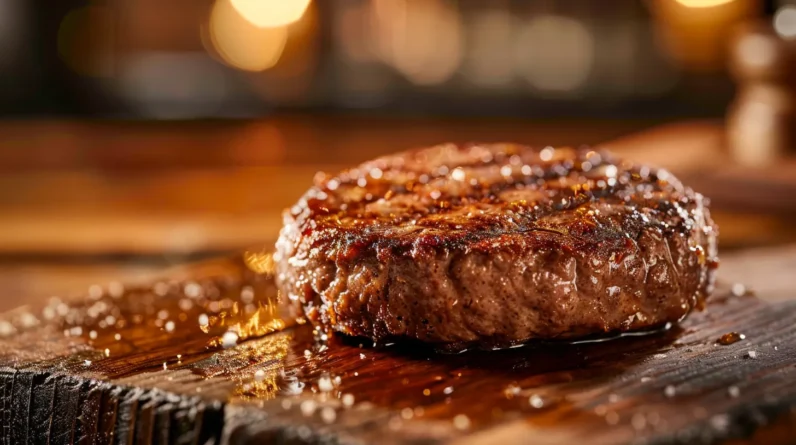
We’ve found that resting meat is crucial for burgers, as it lets protein fibers relax and reabsorb moisture, affecting texture and juiciness. Proper resting times and conditions are key. We’ll explore the science behind resting meat and its impact on burger quality, and by examining the details, you’ll discover how to take your burgers to the next level.
Science of Resting Meat
We’re discussing the science of resting meat, a crucial step in cooking burgers that significantly impacts the final texture and juiciness. We delve into meat science, focusing on fiber behavior. Protein fibers uncoil and coagulate during cooking, expelling moisture. Upon resting, they relax and reabsorb some moisture. This fiber behavior affects texture and juiciness. Understanding meat science and fiber behavior helps us optimize the resting process, leading to better burger quality. By grasping these principles, we can apply them to improve our cooking techniques. Resting’s importance becomes clear when we consider fiber behavior’s role in juice retention and texture.
Impact of Resting on Burger Quality
Understanding the science of resting meat informs our approach to optimizing burger quality. We find that resting significantly impacts meat preparation and burger construction.
| Resting Time | Burger Thickness |
|---|---|
| 0 minutes | Thin (<½ inch) |
| 2-3 minutes | Medium (½-¾ inch) |
| 3-5 minutes | Thick (>1 inch) |
We use this data to improve our burger construction, ensuring juicy and flavorful results.
Controversies and Limitations Around Resting
As we delve into the complexities of resting meat, it becomes clear that this practice is not as straightforward as it seems. We’ve found that resting’s impact on juice retention is debated, with some arguing it’s crucial, while others claim it causes undesirable effects. Food safety concerns, such as temperature control and meat storage, must be considered to prevent overcooking or contamination. Balancing these factors is key to optimal results, as improper resting can compromise food safety and quality. We must weigh the risks and benefits, considering the nuances of meat storage and handling to ensure a safe and enjoyable dining experience.
Optimal Resting Time and Conditions
Resting meat for burgers requires careful consideration of time and conditions to achieve optimal results. We find that optimal resting times vary, but generally, thinner cuts rest for 5-7 minutes, while thicker cuts benefit from 10-20 minutes. We recommend resting meat in warm environments, using gentle handling to prevent moisture loss. This allows for even temperature distribution and juice redistribution, resulting in a more tender and flavorful burger. By applying these principles, we can master the art of resting meat, ensuring our burgers retain their juiciness and flavor. Proper resting is crucial for achieving optimal results.
Practical Tips for Best Burger Results
To achieve the best burger results, we’ll be focusing on several key areas that require attention to detail. We’re emphasizing proper burger assembly and cooking techniques. By mastering these, we ensure our burgers are juicy and flavorful. We use consistent portion sizes and gentle patty formation. During cooking, we apply medium-high heat and avoid overcrowding. For assembly, we toast buns and add flavorful sauces, layering fresh vegetables and cheese to complement the patty. By combining these techniques, we create a superior burger experience, highlighting the importance of precise cooking techniques and thoughtful burger assembly.
Conclusion
We’ve uncovered the science behind resting meat, but the question remains: will you master the art of resting to craft the perfect burger, or will your patty fall short? The clock is ticking, and the fate of your meal hangs in the balance – the optimal resting time is crucial.


